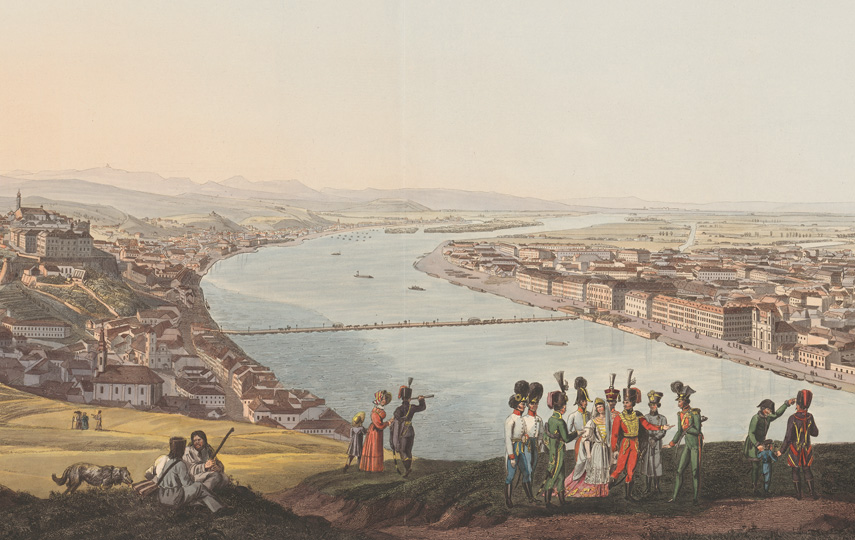The Danube. A journey into the past
The current special exhibition »Beethoven. World of the Man and Spark of the Gods will be extended from May 29 to January 10, 2021 and can thus be seen in the State Hall for the entire Beethoven anniversary year. The exhibition » The Danube. A journey into the past was therefore postponed to spring 2021. The new special exhibition in the Literature Museum » Utopias and Apocalypses. The Invention of the Future in Literature will be shown from October 8, 2020 to April 25, 2021.
For centuries, the Danube was an untamed natural space. The river and its banks obeyed the dynamics of the water and the changing seasons, with occasionally major floods several times a year. This did not change until the 19th century, when the Habsburg Monarchy set itself the task of taming the river and opening up a huge economic and cultural area.
In 1870, 150 years ago this year, work began on the regulation of the Danube in Vienna, at the same time as it was being romanticised as a natural paradise. Artists, literary figures and musicians glamorised the River Danube, with the painter Rudolf von Alt creating a visionary panorama of Vienna for the 1873 World Exhibition with monumental buildings that were never built.
In the large special exhibition "The Danube", this and other extraordinary works from the Austrian National Library invite visitors on a "journey into the past". The Danube is presented as both a border and a link, as a space of yearning for artists and as a traffic route. And of course it is also about natural disasters and natural areas worth protecting.
The highlight of the exhibition is a spectacular 44-meter-long reproduction of the famous Pasetti map. This map, published by the Imperial-Royal State Ministry from 1857, shows an extremely precise image of the Danube in the territory of the Habsburg Monarchy from Passau to the Iron Gate. Its purpose at that time was to create public awareness of the political and economic importance of this waterway for the entire Austro-Hungarian Empire. Today, after the major regulatory measures and the construction of numerous power stations, it is a reminder of a Danube that no longer exists.


![[Translate to English:] Eintritt frei für alle unter 19 - Logo](https://webarchiv.onb.ac.at/web/20200503145241im_/https://www.onb.ac.at/fileadmin/user_upload/3_Logos/Logo_EintrittFrei_RGB_neu.jpg)
![[Translate to English:] Ö1 Club Logo](https://webarchiv.onb.ac.at/web/20200503145241im_/https://www.onb.ac.at/fileadmin/user_upload/3_Logos/oe1_club.jpg)

